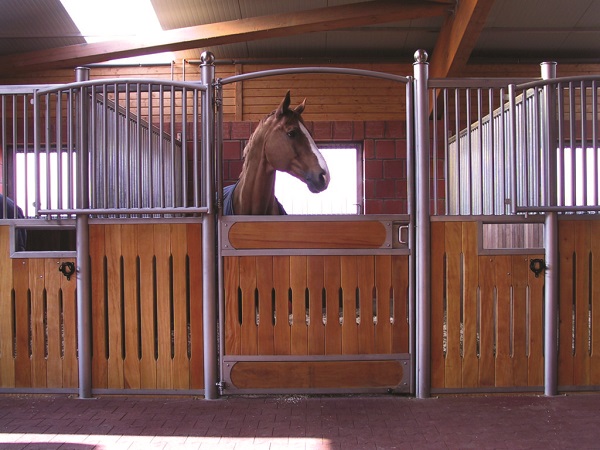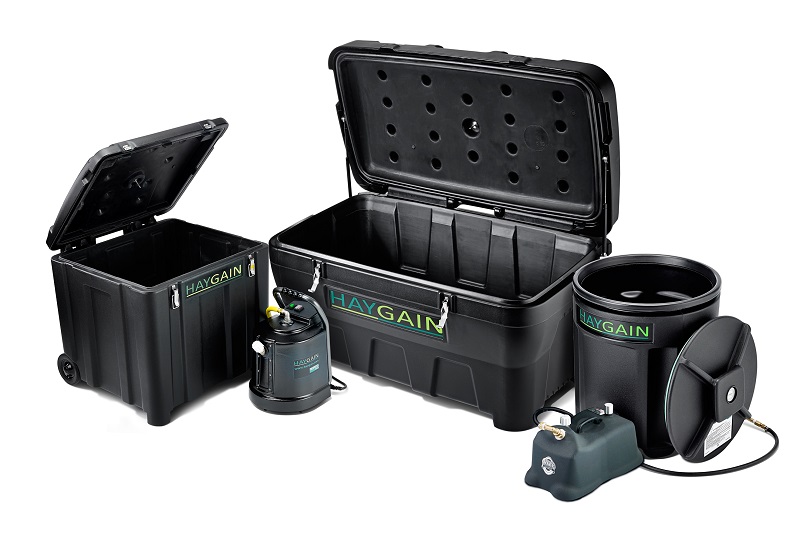Posted: 29th November 2018 | Back to news feed

Haygain are dedicated to improving equine health through research and innovation, and here they examine why a horse might cough, and the steps horse owners can take to help avoid their horse developing a cough in the first instance.
It’s important to note that a healthy horse shouldn’t cough at all, so a persistent cough should always be investigated with your vet. When you notice a cough and decide to call your vet, try to record when the horse coughs so that together you are able to identify any patterns that arise. Do they always cough after exercise? Or when the yard has been mucked out or when fed their hay?
There is a small chance that the cough could be due to a foreign object trapped in their upper respiratory tract or pressure from an internal growth, but the likelihood is that it has been caused by one of the following:
• A viral respiratory tract infection
• Pharyngitis
• An allergic respiratory disease such as RAO (recurrent airway obstruction)
• Pneumonia
• IAD (inflammatory airway disease)
• EIPH (exercise induced pulmonary haemorrhage)
If the horse isn’t running a fever (your horses’ temperature should be between 37.2-38.3°C) and there isn’t any visible nasal discharge, it is highly probable that the root cause of the cough is an allergic respiratory disease. Recent research carried out in conjunction with Haygain showed that 84% of horses suffer from an allergic respiratory disease such as RAO, and it can be debilitating.
Allergic respiratory diseases are brought on by chronic exposure to allergens such as mould or dust, which means the stabled horse will be at risk of developing one unless steps are taken to manage the environment. Dust, mould and fungal spores are all found in hay and many types of bedding, and some stables have poor or non-existent ventilation. Ideally, a horse with an allergic respiratory disease that is feared to be triggered by being stabled would be turned out 24/7, however this may not always be a possibility. Competition and training routines necessitate stabling, some livery yards only offer limited-time turnout due to lack of grazing, the horse may suffer from mud fever in the winter months and many yards need to protect their fields during the muddy seasons.

There are steps that owners can take to prevent their horse from being exposed to allergens even if they are stabled, including:
• Ensuring the stable is well ventilated is essential – American barns should be left with the external doors open, and any windows in the box itself left open too.
• Sourcing low-dust bedding and ensuring the horse isn’t in their stable if other boxes nearby are being bedded down with dusty straw or shavings.
• Steaming the hay that is fed to them to remove dust, spores and mould. Traditionally, soaking was used to remove respirable particles, but research shows that not only does soaking make the hay far less palatable, it also greatly increases the bacteria found in the hay. It’s also unpleasant to handle and move soaked hay and the water run-off is a recognised pollutant.
The Haygain Steamer (from £695.00) is simple to use and scientifically proven to make the hay more palatable to eat whilst reducing respirable dust in forage by 99%. A patented steam distribution manifold spike ensures steam penetrates into the very middle of the forage, ensuring an even distribution of steam throughout for perfect results every time.

Explore the Haygain Steamer range and read more about how the products aid equine respiratory health here: https://haygain.co.uk/collections/equine-hay-steamers
The Equestrian Index newsfeed is compiled from articles submitted by advertising members and expresses the opinions of those members. Watsons Directories Ltd shall not be held liable for any inaccuracies or mis-statements therein.
